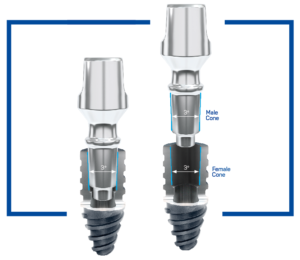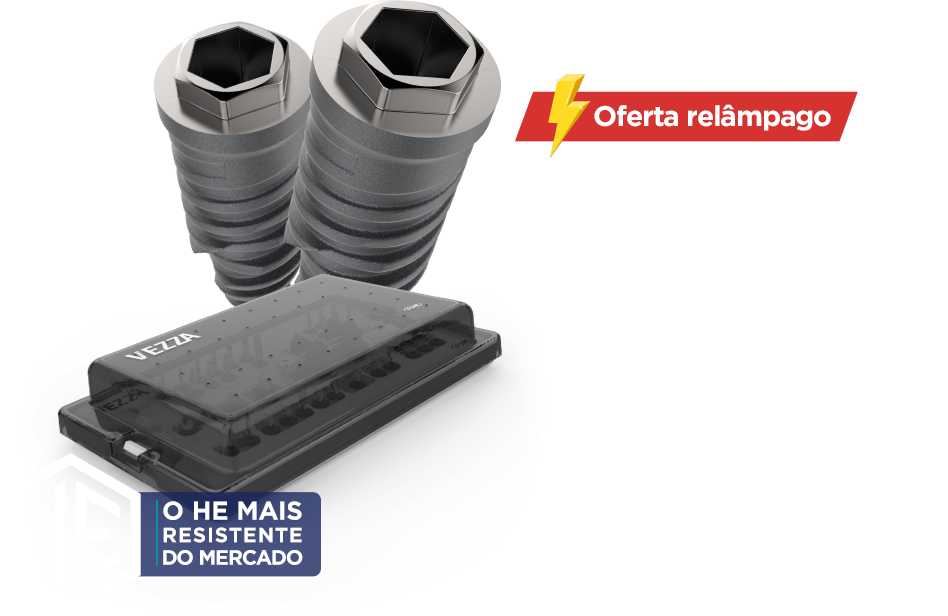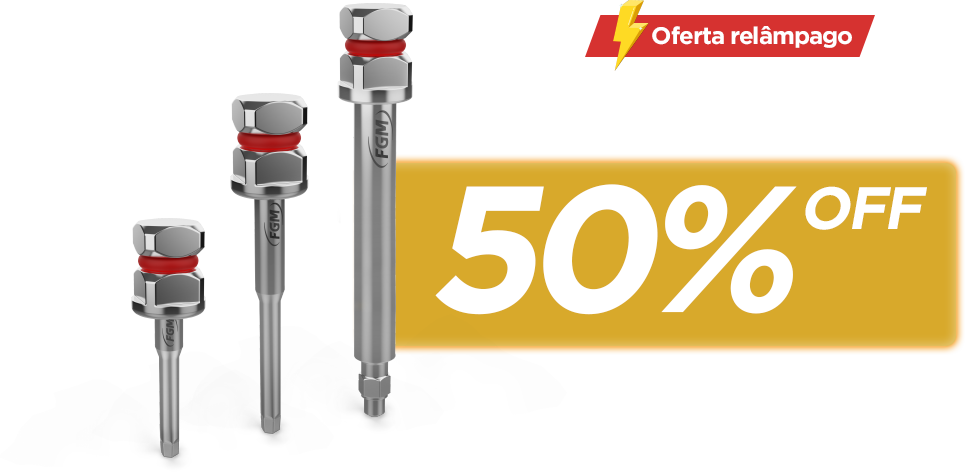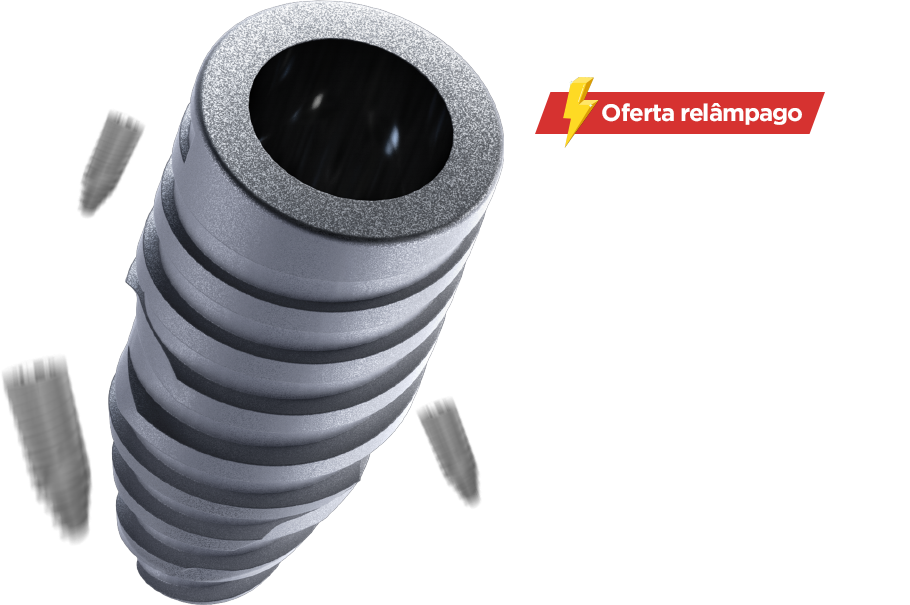Over the years, different types of connections between prosthetic components and dental implants that may be osseointegrated have been developed and studied¹, however, the use of screws is still the most common method for fixing prostheses over implants. The reversibility of screwed systems is often acclaimed; however, the loosening or fracturing of the fixation screws of the intermediaries is a frequent complication²,³.
Among the screw-retained connections, we have the internal conical connections and the non-conical ones (which may be internal or external). The internal conical connections have a lower rate of bacterial infiltration in the implant and micromovement than non-conical connections, which results in a lower index of loosening of the intermediaries and greater stability of the marginal bone crest over the years⁴.
The frictional morse taper connections do not require screws, given that the fixation of the components takes place due to the friction of the male cone (prosthetic component) with the internal walls of the implant (female cone). Their use originated in a concept of mechanical engineering⁵, by which the low conicity of the walls (which may vary from 1 to 3 degrees) generates high contact pressure between the components and results in interlocking, generating the disruption of the surface oxide layers, enabling the microfusion of the rough portions, a phenomenon known as cold welding⁶.
This connection presents a high resistance to traction; however, it may be broken by shearing forces⁷. It is believed that the repeated forces exercised during mastication, when directed vertically along the implant axis, may intensify the mechanical interlocking between the prosthetic components and implants, increasing the retention. Clinical studies about this type of connection have reported high success rates⁸,⁹,¹⁰.




In order to obtain a stable connection, the Arcsys system was developed with internal walls with inclinations of 3o, with 1.5o on each side, thus respecting the requirements to be considered a true morse connection, seeking to eliminate complications related to the loosening of prosthetic components. To obtain reversibility, the system developed component removal tools that fit them, allowing the rotation movement that causes the shearing of the connection. Hence, the system offers the stability of the true morse and reversibility in the same system.
The internal design of the Arcsys implants is the same for the entire implant line, for different diameters and even the short implants, leading any prosthetic intermediary available in the system to be compatible with all implants, thus allowing a significant reduction of stock at the office. The difference among the different implant diameters is in the thickness of the external wall.


Moreover, the system makes PEEK healing caps available, which makes them more multifunctional. The transfer copings made of PEEK, which allow the personalization of all prosthetic components besides enabling resins and even the making of the provisional crown over the molding, may be cut to be used as a protection cylinder or for making a provisional.
Author: Dr. Rodrigo Melim Ferreira
Bachelor of Dentistry, Specialist in Dental Prostheses, Master of Dentistry, and Coordinator of the Dental Prosthesis courses at the IOA and Unique Cursos.
References
¹. Gil FJ, Herrero-Climent M, Lázaro P. Implant–abutment connections: influence of the design on the microgap and their fatigue and fracture behavior of dental implants. J Mater Sci: Mater Med 2014; 25:1825-1830.
². Goodcare CJ, Kan JYK, Rungcharassaeng K. Clinical complications of osseointegrated implants. The Journal of prosthetic dentistry 1999;81(5):537-552.
³. Schwarz MS. Mechanichal complications of dental implants. Clinical Oral Implants Research 2000;11(1):156-158.
⁴. Koutouzis T, Wallet S, Calderon N, Lundgren T. Bacterial colonization of the implant-abutment interface using na in vitro dynamic loading model. J Periodontol 2011;82(4):613-618.
⁵. Hernigou P, Queinnec S, Lachaniette, CHF. One hundred and fifty years of history of the Morse taper: from Stephen A. Morse in 1864 to complications related to modularity in hip arthroplasty. Int Orthop 2013;37(10):2081-2088.
⁶. Keating K. Connecting abutments to dental implants “An Engineers perspective”. Irish Dentst 2001;:43-46
⁷. Bozkaya D, Muftu S. Efficiency considerations for the purely tapered interference fit (TIF) abutments used in dental implants. J Biomech Eng 2004;126(4):393-401.
⁸. Urdaneta RA, Marincola M, Weed M, Chuang S-K. A screwless and cementless technique for the restoration of single-tooth implants: a retrospective cohort study. J Prosthodont 2008;17:562-571.
⁹. Muftu A, Chapman RJ. Replacing posterior teeth with freestanding implant: four-year prosthodontic results of a prospective study. J Am Dent Assoc 1998;129:1097-1102.
¹⁰. Mangano C, Mangano F, Piatteli A, Iezzi G, Mangano Prospective clinical evaluation of 307 single-tooth morse taper-connection implants: a multicenter study. International jornal of oral & maxillofacial implants 2010;25(2):394-400.




























